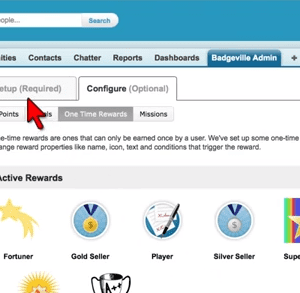Special Features
Generating Channel Leads Through Content
 By Patricia Hume, President, Trapit
By Patricia Hume, President, Trapit
Over a long career, most of my time has been spent managing channel operations for some of the best — IBM, SAP, and Avaya among them — drawn by the challenge of helping the business grow through the reach of “alternatives” to direct sales; distributors, resellers, service providers and others. Through many years of marketing and selling through the channel, I was fortunate to gain a deep understanding of what it took to effectively drive real results for both the vendor and for the partners.
Why is it so hard to build and maintain a proficient high-value channel? We all know that partners have specific technical skills that they use to develop and deliver value added services/solutions that augment manufacturers’ offerings. They recognize that to reap maximum benefits from any given partner program, they need sales skills to complement their technical prowess. But the ultimate challenge remains: “Where do I get leads?”
Vendors have come a long way in providing education, assets and even marketing automation tools to support channel partners in providing marketing programs and tactics that help the partner become self-sufficient in creating the required demand and leads. But where do they get the content for these programs?
In a perfect scenario, all vendors deploying the channel would have each member of their partner program meetings targets and achieving growth quarter-over-quarter. But we also understand the 80:20 rule — the vital few and trivial many — 80% of channel results are produced by 20% of the partners. So it is not surprising that the goal of the manufacturer is to activate that long tail, increasing participation and driving higher returns. But at what cost? At Avaya, I remember working with our silver level partners to improve their results, helping them achieve gold level, requiring them to produce more revenue. With this focus, we were successful in increasing the overall company revenue, returning a positive ROI and increasing the partner satisfaction as more partners benefited from their commitment to Avaya.
But even as these “old” challenges are solved, issues remain, not the least of which is, again, lead creation. Much has changed over the past five years: First and foremost, the ease of creation and dissemination of information. For the channel to thrive, it is imperative that the vendor ensure partners not only have great tools to use to create clever marketing tactics, but they also must have the right content needed to fuel that engine. CONTENT… the new black.
What is the right content? We ask our partners to: Stay current with industry trends, understand new products and solutions, know the competition, have access to local and relevant news, and so on. And the partner has needs as well: A clear and concise means of understanding industry trends, visibility to local trends, and content that is relevant to them — not one size fits all — that comes in a digestible, even personalized stream rather than through a fire hose. But how does the vendor deliver content that is truly relevant and useful to their partner community? Today there is a continued focus on striking a balance between content created by the vendor and curated third party content, allowing the vendor and channel strike the right mix.
Where do we get content? Vendors produce a lot of content and use portals, newsletters, emails, social media marketing and other methods to deliver content to their partners. But partners are drowning in the amount of information they receive, and what they are getting is not always relevant to them. Sure, it is good for product education, but when it comes to leveraging the content for an impactful lead generation campaign that will resonant locally with the prospective customers, that is where it falls short.
Vendors are also just now starting to leverage the power of content curation tools to complement the content that they create. Through the capabilities of content discovery and machine learning, these new technologies provide a powerful solution. The ability to curate content that is on the web and behind the firewall, vendors can now efficiently and economically provide truly relevant and real-time content to their partners. In this way, the partner now has something that will be more personalized for them, their markets and their needs.
How do we best use the new content? In achieving that perfect content balance, channel partners may consider these hints to really increase the effectiveness of their marketing efforts:
1) Define your target buyers — but also those who may be consuming your content. While the buyer persona is your most important audience, you should also consider the “reader” persona — those in your industry interested in what you do and may read or share your content, but are not likely to buy. Both can be valuable for creating leads and brand awareness.
2) Think about pain points and challenges. With a profile of the target audience in hand, consider the daily challenges they face. This allows you to select the content that may offer solutions to these problems. To build a list of these problems, you may want to use social media to find out more. From that list will emerge themes around which content can be created or curated, providing value to your audience. A word of caution: Think beyond content limited to what your products or solutions provide. While important, product-focused content is more powerful when complemented by credible third-party content.
3) Learn their habits. The most engaging content will be content that is presented to your audience in a space they know and like, in a format they understand, and at a time when they are most likely to consume it. Because you’ve already created your buyer and reader personas, you’re halfway there. Think about your personas, and think about where they consume the most content. What are they doing while they consume the content? How much time do they spend? Are they engaging or just perusing? All of these small questions will have an effect on your content strategy.
4) What do they need to know about you and your product? With this grasp of what kind of content your audience may want, and when and where to deliver it, it’s also important to think about what information they need from you about your company and your products. What are your most frequently asked questions? What are the most common gripes or suggestions you hear? What might they be thinking if they are comparing you against a competitor? Content on your web site, blog or social media can be a great way to answer these questions and show your audience exactly who you are and what you offer them.
In summary, it is all about content. Vendors need to step up and understand that the traditional methods of content creation and delivery are just not enough. Understanding the combination of curated and created content, and letting technology do the heavy lifting will certainly set apart one vendor from another as it relates to providing real value to their channel. And the results will speak for themselves — more leads, more revenue, and most importantly, an informed and highly satisfied partner community.
Patricia Hume is President of Trapit. In her position, Hume is responsible for sales, marketing, business development and customer success. Prior to Trapit, Patricia spent 25 years leading global sales and marketing teams for IBM, Avaya, SAP, and Convio. Most recently she was Chief Revenue Officer of Visier, Inc.



![Simplifying Local Marketing For Brands [Infographic]](https://channelmarketerreport.com/wp-content/uploads/2014/04/IG_primary-image-300x300.png)










